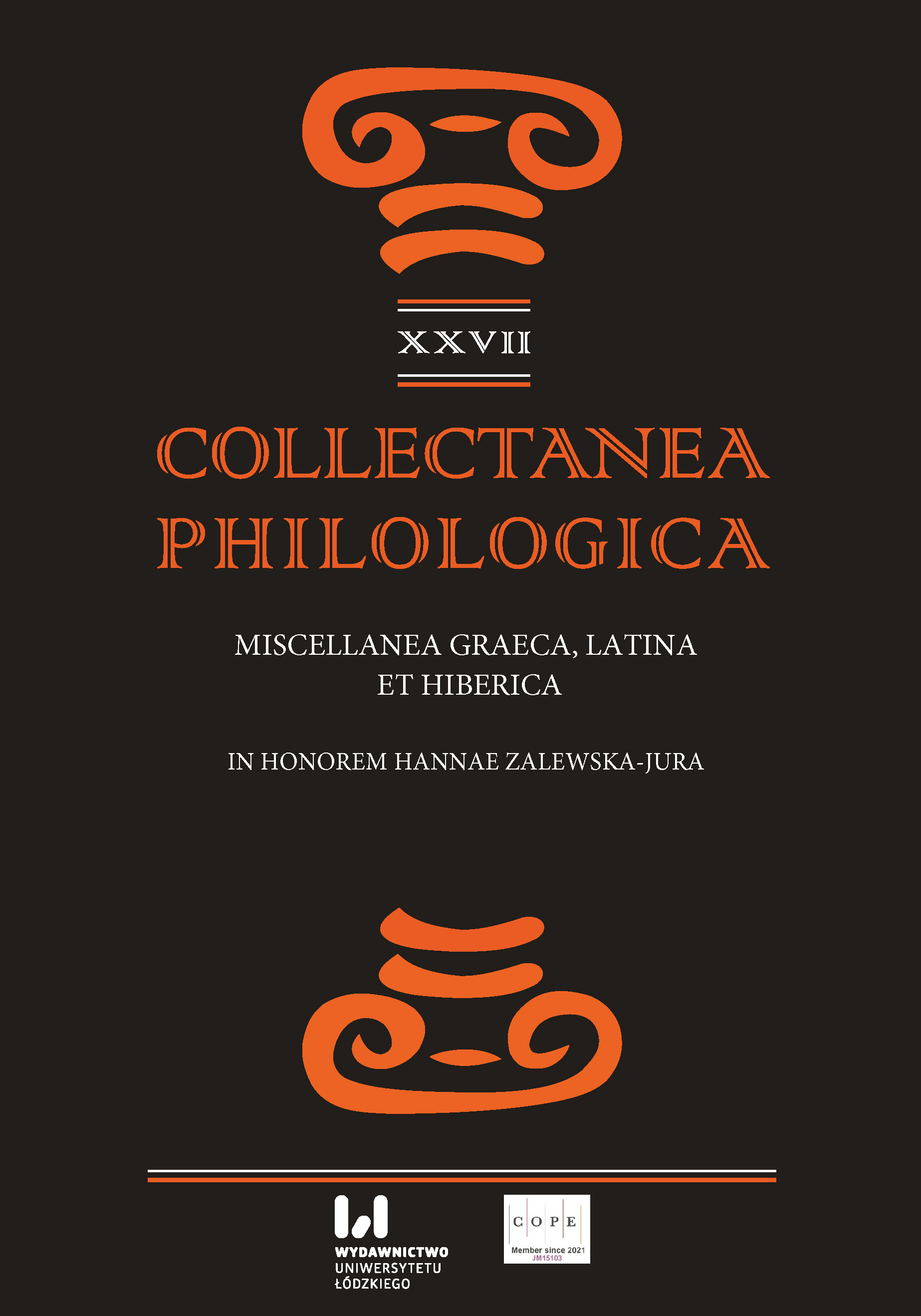Priestesses of the Imperial Cult in the Spanish Provinces in Honorific Inscriptions
DOI:
https://doi.org/10.18778/1733-0319.27.15Keywords:
epigraphy, honorific inscriptions, history of Rome, imperial priestessesAbstract
From Augustus’ times imperial cult priesthood became the highest public function available for women in the Roman Empire. Worshipping the emperor and his family was also a form of showing loyalty of the province to the central power. Flaminicae or sacerdotes, as the priestesses were called in Spanish provinces, were attested in funeral and honorific inscriptions. This article focuses on the second type of the texts. Based on twelve inscriptions from Lusitania and Baetica, the merits of women and the honours they received will be analysed in order to picture the relationships of priestesses with their communities.
References
Alföldy, G. (1998). Historia społeczna starożytnego Rzymu. Przeł. A. Gierlińska. Poznań: Wydawnictwo Poznańskie.
Google Scholar
Curchin, L.A. (1990). The Local Magistrates of Roman Spain. Toronto: University of Toronto Press. https://doi.org/10.3138/9781442676756
Google Scholar
DOI: https://doi.org/10.3138/9781442676756
Fejfer, J. (2008). Roman Portraits in Context. Berlin: De Gruyter. https://doi.org/10.1515/9783110209990
Google Scholar
DOI: https://doi.org/10.1515/9783110209990
Fishwick, D. (1990). The Imperial Cult in The Latin West. Studies in the Ruler Cult of the Western Provinces of the Roman Empire. Vol. II. Leiden: Brill. https://doi.org/10.1163/9789004295759
Google Scholar
DOI: https://doi.org/10.1163/9789004295759
Fishwick, D. (1993). The Imperial Cult in The Latin West. Studies in the Ruler Cult of the Western Provinces of the Roman Empire. Vol. I. Leiden: Brill. https://doi.org/10.1163/9789004297548
Google Scholar
DOI: https://doi.org/10.1163/9789004297548
Hemelrijk, E.A. (2005). Priestesses of the Imperial Cult in the Latin West: Titles and Function. L’Antiquité Classique. 137–170. https://doi.org/10.3406/antiq.2005.2568
Google Scholar
DOI: https://doi.org/10.3406/antiq.2005.2568
Hemelrijk, E.A. (2006). Priestesses of the Imperial Cult in the Latin West: Benefactions and Public Honour. L’Antiquité Classique. 85–117. https://doi.org/10.3406/antiq.2006.2593
Google Scholar
DOI: https://doi.org/10.3406/antiq.2006.2593
Hemelrijk, E.A. (2015). Hidden Lives, Public Personae. Women and Civic Life in the Roman West. New York: Oxford University Press. https://doi.org/10.1093/acprof:oso/9780190251888.001.0001
Google Scholar
DOI: https://doi.org/10.1093/acprof:oso/9780190251888.001.0001
Ladjimi-Sebaï, L. (1990). À propos du flaminat féminin dans les provinces africaines. MEFRA 102. 651–686. https://doi.org/10.3406/mefr.1990.1686
Google Scholar
DOI: https://doi.org/10.3406/mefr.1990.1686
Lefebvre, S. (2001). (Lucceius Albinus), flamen provinciae Lvsitaniae? L’origine sociale des flamines provinciaux de Lusitanie. In: S. Demougin, M. Navarro Caballero, F. Des Boscs-Plateaux (eds.). Élites Hispniques. Pessac: Ausonius Éditions. 217–239.
Google Scholar
DOI: https://doi.org/10.4000/books.ausonius.9129
Melchor Gil, E. (2008). Mujer y honores públicos en las ciudades de la Bética. In: C. Berrendonner, M. Cébeillac-Gervasoni, L. Lamoine (eds.). Le Quotidien municipal dans l’Occident romain. Clermont-Ferrand: Presses Universitaires Blaise-Pascal. 443–457.
Google Scholar
Navarro Caballero, M. (2001). Les femmes de l’élite hispano-romaine, entre la famille et la vie publique. In: S. Demougin, M. Navarro Caballero, F. Des Boscs-Plateaux (eds.). Élites Hispniques. Pessac: Ausonius Éditions. 191–201. https://doi.org/10.4000/books.ausonius.9120
Google Scholar
DOI: https://doi.org/10.4000/books.ausonius.9120
Pastor Muñoz, M. (2015). Epigrafía y culto imperial en la Granada romana. Florentia Iliberritana. Revista de estudios de antigüedad clásica 26. 105–137.
Google Scholar
Downloads
Published
Versions
- 2024-10-30 (2)
- 2024-10-30 (1)
How to Cite
Issue
Section
License

This work is licensed under a Creative Commons Attribution-NonCommercial-NoDerivatives 4.0 International License.












